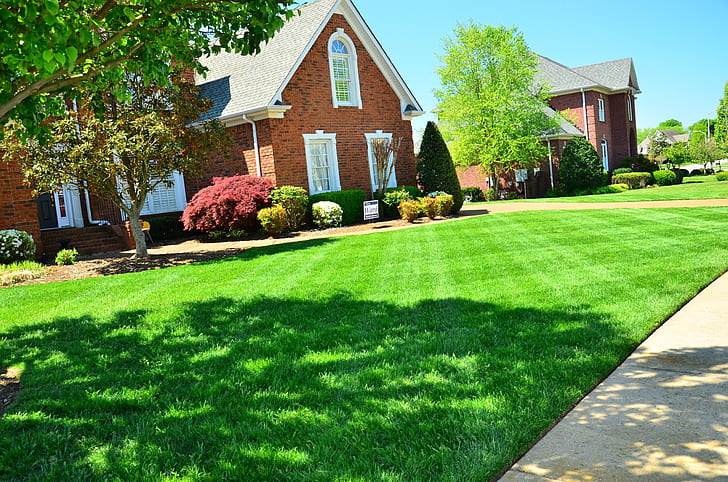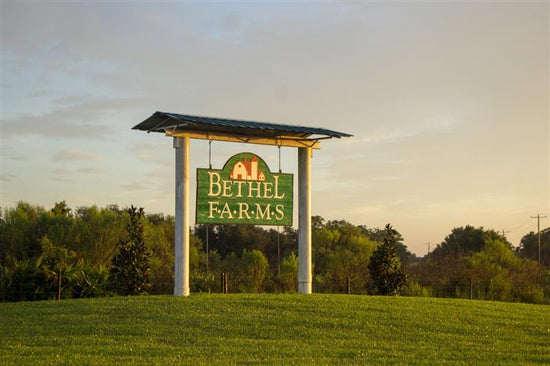
Why Is My Grass Growing Slow?
Jamie TedderAs spring arrives, many homeowners look forward to a lush, green lawn. After a period of slowed growth, we expect our grass to wake up and flourish. This is particularly true for warm-season varieties like bermudagrass, which is known for its aggressive spreading habit. However, it can be frustrating when your lawn lags behind expectations, staying patchy and sluggish instead of thriving.
The latest forecast favors well above-average temperatures across the southern and eastern US, including Florida. With these warmer conditions on the horizon, you can expect grass to grow quickly. However, several factors—from soil quality to maintenance practices—can slow down your lawn’s progress.
Why Fast Grass Growth Matters
A thriving lawn isn’t simply about appearance—it plays an essential role in maintaining a healthy yard. Fast-growing grass helps repair damage, fill bare spots, and crowd out weeds. If your lawn struggles to grow, it becomes more vulnerable to pests, diseases, and environmental stressors.
1. Poor Soil Conditions
Grass relies on soil for essential nutrients, water, and oxygen. Your lawn will struggle to grow if the soil isn’t in good condition.
Compacted Soil: When soil is too dense, it limits air circulation and water absorption, preventing roots from expanding. Heavy foot traffic, equipment use, or clay-heavy soil can all contribute to compaction. Core aeration—removing small plugs of soil—relieves compaction, improves airflow, and allows nutrients to penetrate deeper into the root zone.
Improper pH Levels: Soil that is too acidic or too alkaline affects nutrient availability. Most warm-season grasses, like Bermuda, Zoysia, and St. Augustine, thrive in a pH range of 6.0 to 7.0. Although optional, a soil test can reveal imbalances, guiding amendments like lime to raise pH or sulfur to lower it, restoring optimal growing conditions.
Poor Nutrient Levels: Without the right balance of nitrogen, phosphorus, and potassium, grass growth slows dramatically. In early spring, grass needs nutrients the most to emerge from dormancy and transition into its active growing season.
Waterlogged or Dry Soil: Too much water suffocates roots, while too little leads to dehydration. Proper drainage, aeration, and a balanced watering schedule keep soil moisture at optimal levels for growth.
2. Excessive Heat and Sunlight
While grass needs sunlight to photosynthesize, excessive heat can push it into survival mode. High temperatures cause moisture loss, slow growth, and root damage.
Heat Stress: During prolonged heat, grass conserves energy, prioritizing survival over growth. Deep, infrequent watering—providing 1 to 1.5 inches per week—keeps roots hydrated and resilient.
Scorching Sunlight: Some grass types, like fine fescues, struggle in full sun. In Florida’s warm climate, heat-tolerant varieties like Bermudagrass or Zoysiagrass are better suited for high-exposure areas.
3. Underwatering
Insufficient water stunts grass growth and can lead to dormancy. Warm-season grasses, like Bermudagrass, require about 1 to 1.5 inches of water weekly. If rainfall isn’t sufficient, supplemental irrigation is necessary.
Shallow Watering: Frequent, light watering encourages weak, shallow roots because moisture remains near the surface, preventing roots from growing deeper in search of water. Watering deeply and less often helps grass develop stronger root systems, making it more drought-resistant.
Drought Response: During prolonged dry periods, grass may enter dormancy, turning brown and appearing lifeless. However, its roots typically remain intact and can recover with proper watering and care. If drought is a frequent concern, opting for drought-tolerant varieties like Bimini Bermudagrass can enhance your lawn’s resilience and long-term health.
4. Mowing Too Short
Cutting too low weakens grass, exposing the soil to excessive sunlight and promoting weed growth.
Scalping: Mowing your lawn too short stresses the grass and reduces its ability to photosynthesize effectively. For optimal growth, maintain bermudagrass at 1 to 2 inches and avoid removing more than one-third of the blade in one mowing session.
Dull Mower Blades: Dull blades tear rather than cut, causing stress and increasing disease susceptibility. Regularly sharpening mower blades ensures clean cuts that promote healthy growth.
5. Seasonal Growth Patterns
Before worrying about slow growth, consider the time of year. The grass may still be experiencing seasonal slowdowns or dormancy. Warm-season grasses like bermudagrass slow their growth in cooler temperatures, typically below 55°F. A simple way to check if your grass is dormant or dead is the “tug test.” Gently pull on a patch of grass—if it resists, it’s alive and will green up with warmer temperatures and proper care.
6. Pests and Diseases
Lawn pests and fungal infections can significantly slow or halt growth. For example, grubs feed on grass roots, causing brown patches. If you suspect grubs, lift a small section of the grass—finding more than five per square foot may indicate a problem requiring treatment. Chinch bugs and sod webworms can also weaken grass by feeding on it. Proper lawn maintenance, like balanced fertilization and targeted treatments, helps control these pests and prevent damage.
Additionally, diseases create patchy, discolored grass, often thriving in overly moist conditions. Applying fungicides and improving air circulation can help manage fungal growth.

When to Consider New Sod Installation
If your lawn continues struggling despite best efforts, installing new sod might be the best long-term solution.
Severe Damage: Extensive pest, disease, or drought damage can leave large dead patches. New sod offers an instant fix, restoring uniformity and vigor.
Wrong Grass Type: If your lawn isn’t suited to your region’s climate, replacing it with a more resilient variety can save time and maintenance effort.
Time-Saving Solution: Instead of waiting multiple seasons for your lawn to recover, installing fresh sod provides immediate, uniform coverage, reducing maintenance struggles.
Bethel Farms specializes in high-quality grass sod for sale, including Bimini Bermudagrass, a premium option known for its early spring green-up, improved drought and traffic tolerance, and fast recovery. With a commitment to sustainable farming, Bethel Farms provides homeowners and landscapers with top-tier sod varieties designed to thrive in their specific climate conditions.
Final Thoughts
Slow-growing grass can be frustrating, but pinpointing the cause allows for targeted solutions. Whether it’s improving soil quality, adjusting watering habits, or laying new sod, there are always ways to achieve a lush, healthy lawn. With proper care and the right grass type, your lawn can bounce back stronger and greener than ever.

